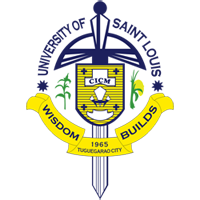
As the University of Saint Louis (USL) envisions to be a global learning community recognized for science and technology, the Elementary Department and Junior High School Science curriculum across grade levels have recently adopted robotics program in their respective curricula and effectively implemented this school year 2017-2018.
USL, in collaboration with First EduSpec, Inc. (FEI), a K to 12 IT Education Provider in Asia, aims to provide opportunities to bring out 21st century skills of the Louisian pupils and students through embracing and implementing science and technology related programs in the University.
‘Robotics for School’ program
The “Robotics for School” (RFS) is a program designed by First EduSpec, Inc. which offers exclusive and advanced education with basic engineering technology and literacy for primary and secondary schools in the Philippines.

The said robotics program is anchored on John Dewey’s “learning-by-doing” pedagogical concept which exposes learners to various tasks to solve specific problems in real-life situations. It uses collaborative project-based curriculum wherein pupils and students are exposed to various competency-based learning tasks.
Under the program, hands-on and engaging activities are conducted inside the classroom. Interactive techniques such as games, brainstorming and other group dynamics are used in learning, designing and creating functional robots out of LEGO parts.
Unleashing potentials
The robotics program in the Elementary Department focuses on introduction to basic architectural and mechanical construction of robots with less emphasis on theories.
“The robotics program is an avenue to produce learners with the 21st century skills such as critical thinking, creative thinking, and of course, collaboration and communication among the pupils during their activities,” said Dr. Emily T. Mabborang, principal of the Elementary Department.
The inclusion of the program in the curriculum of the Elementary Department is also aimed at honing and refining the pupils’ soft skills such as management and manipulative skills.
Dr. Mabborang likewise said that the program serves as a cognitive and social milestone for the pupils to discover technological possibilities in the teaching-learning environment. She emphasized that the program is incorporated in Mathematics, and each activity of the pupils is recorded and added in their performance in Mathematics subject.
Strengthening HOTS
High level concentration on theories, advanced architectural and mechanical construction, focused programming activities, and thorough assessment on robotics experiments distinguish the robotics program in the Science curriculum of the Junior High School.
Series of activities is conducted to challenge students’ problem-solving, strategic thinking and teamwork. Workshops are also done to enhance students’ visual communicative skills and technological languages in explaining and illustrating different aspects of technology.
Moreover, problem and project-based learning tasks like designing, programming and animating robots are most expected activities of the students. These activities present complex problems such that students are to use reasoned decisions and solve problems through exploring deeper understanding of concepts and principles.
With these activities, students are expected to be competently equipped with the aforementioned skills and be well-versed in manipulating robot educational tools.
Through the University’s robotics program, pupils and students are expected to have valuable exposure to scientific advancements and explore technical know-hows.

